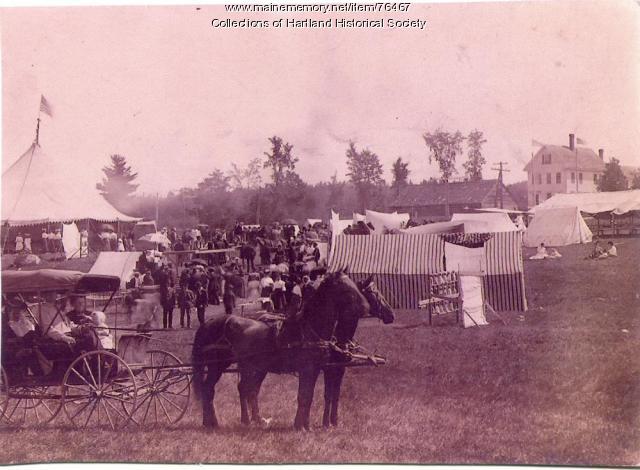Keywords: Somerset
Item 36019
Officers of Somerset County, 1895
Contributed by: Skowhegan History House Date: 1895 Media: Photographic print
Item 76467
East Somerset Agricultural Society fair, Hartland, ca. 1890
Contributed by: Hartland Historical Society Date: circa 1890 Location: Hartland Media: Photographic print
Item 59796
Assessor's Record, Storage, Somerset Street, Portland, 1924
Owner in 1924: Portland Stove Foundry Company Use: Storage - Sand
Item 59797
Assessor's Record, Storage, Somerset Street, Portland, 1924
Owner in 1924: Portland Stove Foundry Company Use: Storage - Cooling Bunkers
Item 111984
Somerset County Court House, Skowhegan, 1873-1904
Contributed by: Maine Historical Society Date: 1873–1904 Location: Skowhegan Client: Somerset County Architect: John Calvin Stevens
Item 109921
Somerset County Courthouse, Skowhegan, 1928
Contributed by: Maine Historical Society Date: 1928 Location: Skowhegan Client: Somerset County Architect: Harry S. Coombs
Exhibit
Student Exhibit: Somerset Railroad
The Somerset Railroad was completed in 1872. It started out as a dream to link the Maine Coast with Canadian businesses to the north. It ran from the North Woods around Moosehead Lake down to Southern Maine and back again for 56 years.
Exhibit
After the canoe, steamboats became the favored method of transportation on Moosehead Lake. They revolutionized movement of logs and helped promote tourism in the region.
Site Page
Skowhegan Community History - Lakewood Theater
"… Jaime Bacon Lakewood Theater X In 1895, the Somerset Traction Company of Skowhegan created a small amusement park on the little lake called…"
Site Page
New Portland: Bridging the Past to the Future - New Portland: Bridging the Past to the Future
"This town is located in Somerset County of the State of Maine. It is bordered on the north side by Kingfield and Lexington, and on the east by Embden."
Story
Mosher family history and my career at S.D. Warren
by Abbott Mosher
My family settled the Westbrook region and I am a 4th generation paper maker at S.D. Warren.
Story
Rug Hooking Project with a Story
by Marilyn Weymouth Seguin
My grandmother taught me the Maine craft of rug hooking when I was a child.
Lesson Plan
Longfellow Studies: "The Jewish Cemetery at Newport"
Grade Level: 6-8, 9-12
Content Area: English Language Arts, Social Studies
Longfellow's poem "The Jewish Cemetery at Newport" opens up the issue of the earliest history of the Jews in America, and the significant roles they played as businessmen and later benefactors to the greater community. The history of the building itself is notable in terms of early American architecture, its having been designed, apparently gratis, by the most noted architect of the day. Furthermore, the poem traces the history of Newport as kind of a microcosm of New England commercial cities before the industrialization boom. For almost any age student the poem could be used to open up interest in local cemeteries, which are almost always a wealth of curiousities and history. Longfellow and his friends enjoyed exploring cemeteries, and today our little local cemeteries can be used to teach little local histories and parts of the big picture as well.
Henry Wadsworth Longfellow visited the Jewish cemetery in Newport, RI on July 9, 1852. His popular poem about the site, published two years later, was certainly a sympathetic portrayal of the place and its people. In addition to Victorian romantic musings about the "Hebrews in their graves," Longfellow includes in this poem references to the historic persecution of the Jews, as well as very specific references to their religious practices.
Since the cemetery and the nearby synagogue were restored and protected with an infusion of funding just a couple years after Longfellow's visit, and later a congregation again assembled, his gloomy predictions about the place proved false (never mind the conclusion of the poem, "And the dead nations never rise again!"). Nevertheless, it is a fascinating poem, and an interesting window into the history of the nation's oldest extant synagogue.



















